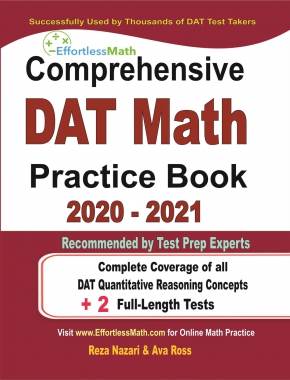Detour of Variable Changes: A Complete Exploration of Related Rates
[include_netrun_products_block from-products="product/6-south-carolina-sc-ready-grade-3-math-practice-tests/" product-list-class="bundle-products float-left" product-item-class="float-left" product-item-image-container-class="p-0 float-left" product-item-image-container-size="col-2" product-item-image-container-custom-style="" product-item-container-size="" product-item-add-to-cart-class="btn-accent btn-purchase-ajax" product-item-button-custom-url="{{url}}/?ajax-add-to-cart={{id}}" product-item-button-custom-url-if-not-salable="{{productUrl}} product-item-container-class="" product-item-element-order="image,title,purchase,price" product-item-title-size="" product-item-title-wrapper-size="col-10" product-item-title-tag="h3" product-item-title-class="mt-0" product-item-title-wrapper-class="float-left pr-0" product-item-price-size="" product-item-purchase-size="" product-item-purchase-wrapper-size="" product-item-price-wrapper-class="pr-0 float-left" product-item-price-wrapper-size="col-10" product-item-read-more-text="" product-item-add-to-cart-text="" product-item-add-to-cart-custom-attribute="title='Purchase this book with single click'" product-item-thumbnail-size="290-380" show-details="false" show-excerpt="false" paginate="false" lazy-load="true"] [include_netrun_products_block from-products="product/6-south-carolina-sc-ready-grade-3-math-practice-tests/" product-list-class="bundle-products float-left" product-item-class="float-left" product-item-image-container-class="p-0 float-left" product-item-image-container-size="col-2" product-item-image-container-custom-style="" product-item-container-size="" product-item-add-to-cart-class="btn-accent btn-purchase-ajax" product-item-button-custom-url="{{url}}/?ajax-add-to-cart={{id}}" product-item-button-custom-url-if-not-salable="{{productUrl}} product-item-container-class="" product-item-element-order="image,title,purchase,price" product-item-title-size="" product-item-title-wrapper-size="col-10" product-item-title-tag="h3" product-item-title-class="mt-0" product-item-title-wrapper-class="float-left pr-0" product-item-price-size="" product-item-purchase-size="" product-item-purchase-wrapper-size="" product-item-price-wrapper-class="pr-0 float-left" product-item-price-wrapper-size="col-10" product-item-read-more-text="" product-item-add-to-cart-text="" product-item-add-to-cart-custom-attribute="title='Purchase this book with single click'" product-item-thumbnail-size="290-380" show-details="false" show-excerpt="false" paginate="false" lazy-load="true"]

What are related rates like?
Related rates are used by first identifying the relationship between variables in a situation, like the radius of a balloon and its volume. Then, understanding how one variable changes (like the rate of air entering the balloon) helps predict the change in another variable (like the balloon’s radius). This approach is widely applied in physics to predict movements, in engineering for design dynamics, and in everyday problem-solving where different factors are interconnected and change simultaneously. For additional educational resources,.
Example 1:
A circular oil spill is expanding on water. The radius of the oil spill is increasing at a constant rate of \( 2 \) meters per minute. Find the rate at which the area of the spill is increasing when the radius is \( 5 \) meters.
Solution:
to define the variable, let \( r \) be the radius of the oil spill and \( A \) be the area of the spill. Given that \( \frac{dr}{dt} = 2 \) meters/minute. The area of a circle is given by \( A = \pi r^2 \). Differentiate both sides of the equation with respect to time \( t \) to find \( \frac{dA}{dt} \):
\( \frac{dA}{dt} = \frac{d}{dt}(\pi r^2) \)
Applying the chain rule, \( \frac{dA}{dt} = 2\pi r \frac{dr}{dt} \).
Now, substituting values, when \( r=5 \) meters and \( \frac{dr}{dt} = 2 \) meters per minute:
\( \frac{dA}{dt} = 2\pi \times 5 \times 2 \)
\( \frac{dA}{dt} = 20\pi \) \( \frac{meters^2}{minutes} \)
So, The area of the oil spill is increasing at a rate of \( 20\pi \) square meters per minute when the radius is 5 meters.
Example 2:
A gas cloud diffuses so that its radius increases at a rate of \( 3 \frac{cm}{s} \). Determine the rate at which the volume of the cloud is increasing when the radius is \( 10 \) cm.
Solution:
\( \frac{dV}{dt} = 4\pi r^2 \frac{dr}{dt} \)
\( \frac{dV}{dt} = 4\pi \times 10^2 \times 3 = 1200\pi \) cm³/s.
Related to This Article
More math articles
- 5 Best Desks for Online Math Teachers in 2026
- Why Interactive Challenges Improve Math Skills More Than Memorization
- Intelligent Math Puzzle – Challenge 80
- Intelligent Math Puzzle – Challenge 89
- How is the TASC Test Scored?
- How to Master Two-Column Proofs: A Step-by-Step Tutorial
- Top 10 Tips to Overcome ASTB Math Anxiety
- How to Demystifying the Bell Curve: A Comprehensive Guide to Understanding Normal Distribution
- How to Find Distance and Midpoint of Complex Numbers?
- 8th Grade RISE Math Worksheets: FREE & Printable


























What people say about "Detour of Variable Changes: A Complete Exploration of Related Rates - Effortless Math: We Help Students Learn to LOVE Mathematics"?
No one replied yet.